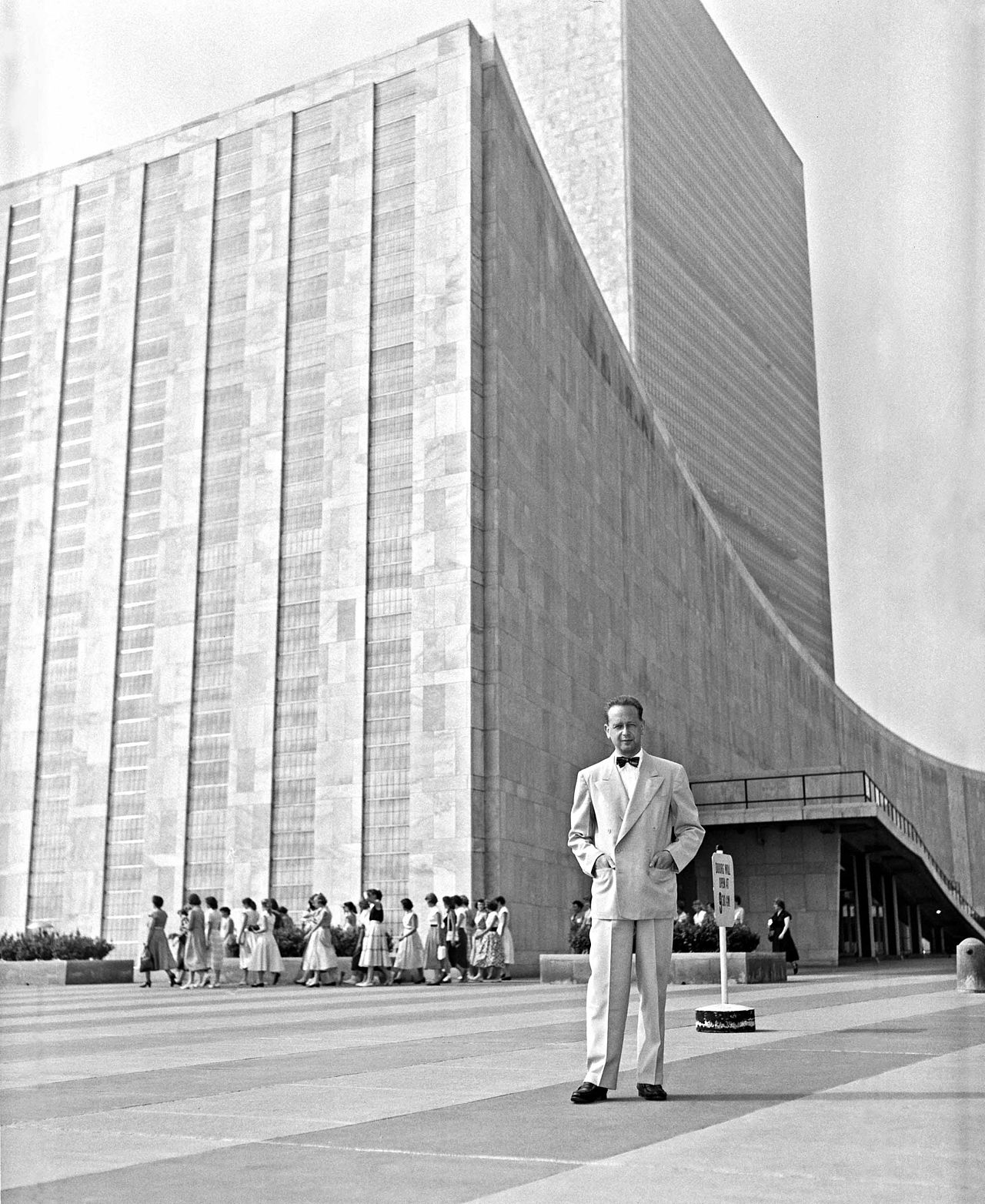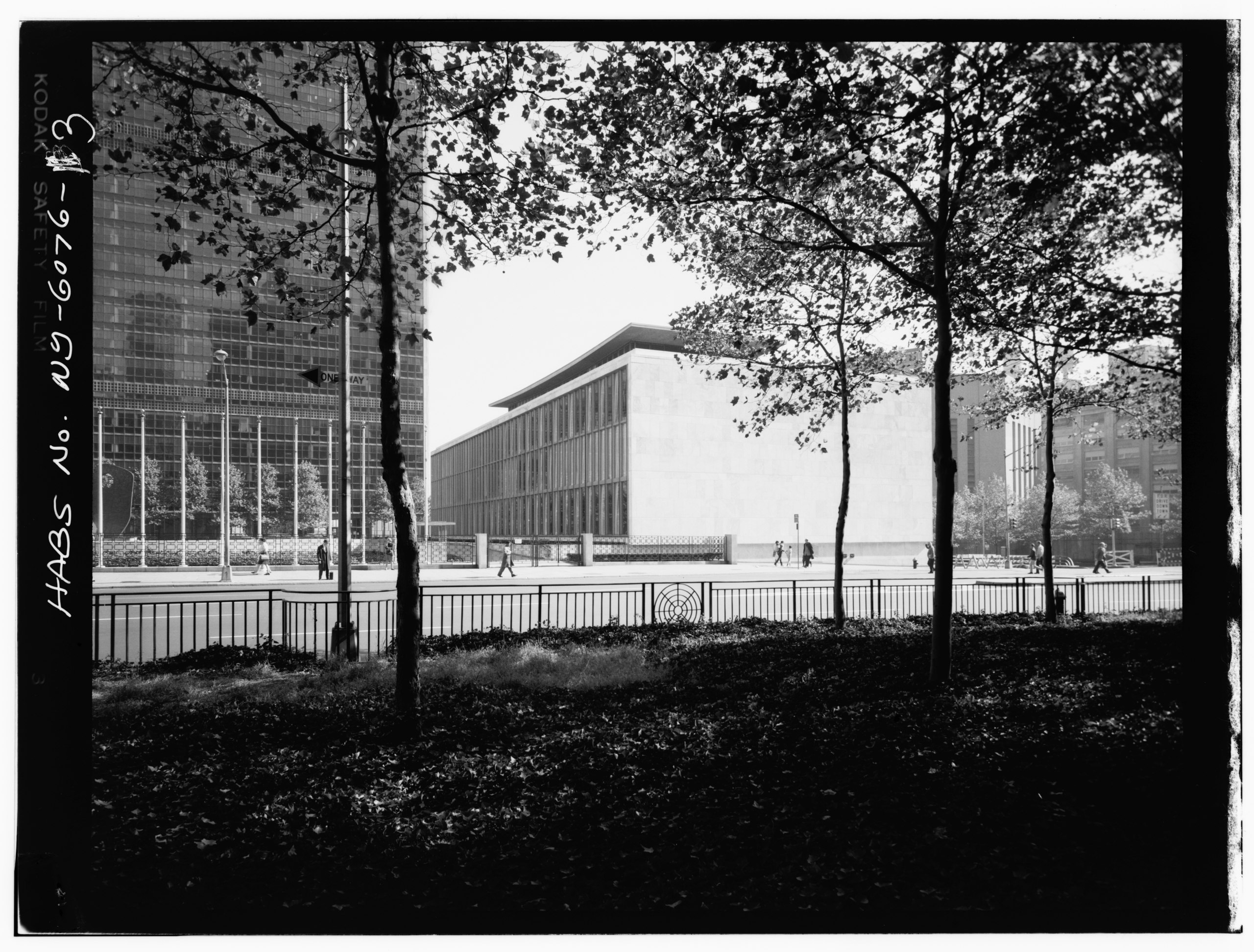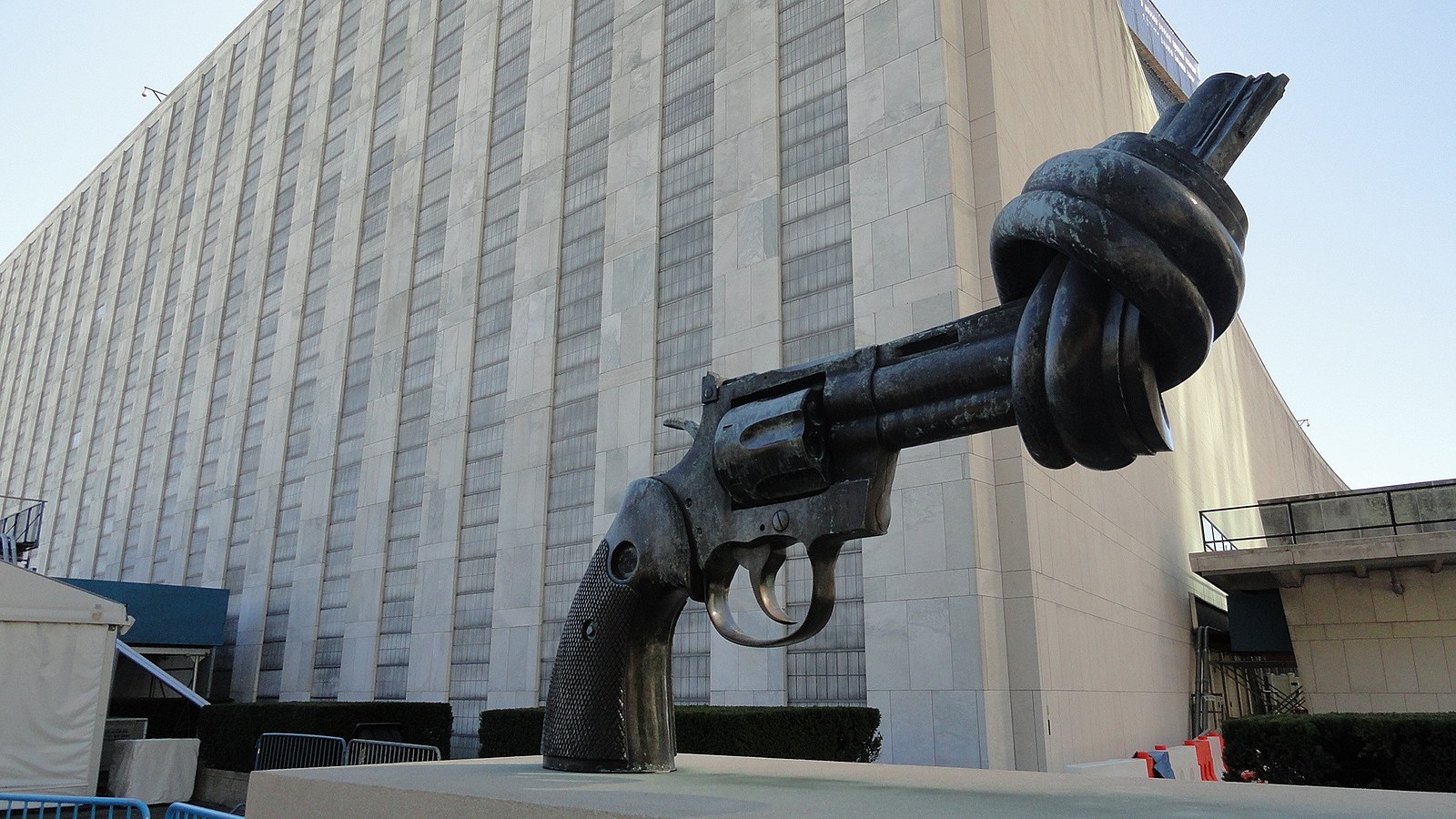After four years of construction, the United Nations Headquarters Headquarters was completed in 1952. Constructed in the Big Apple, the peace organization’s home adds to the rich history of New York City. Several cities actually bid to be the official site of the United Nations, but all were rejected. NYC served as the clutch feasible solution, as it was deemed as the ideal neutral ground to be the dwelling of the league of nations. In this post, let’s know more about the fascinating facts about United Nations HQ in New York City and how it continues to be one of the city’s landmarks and an international insignia of progress and cooperation.
It’s Located in Turtle Bay
The United Nations Headquarters is situated on an 18-acre grounds in Manhattan’s Turtle Bay neighborhood. Its borders are located in East 48th Street (North), East 42nd Street (South), First Avenue (West), and the scenic East River (East).
There are 194 Flags That Fly Outside the UNHQ
There’s one flag for each of the 193 member states, in addition to the UN Flag. They are arranged in English alphabetical order from north to south. Approximately at 8:00 AM during weekdays, UN security officers manually raise the flags, then lower them down at around 4:00 PM. Raising and lowering the flags usually takes about half an hour. Only the UN Flag is hoisted during the weekends, except if there are conferences or meetings happening inside.
Its Board of Design Was Composed of 11 Architects
The entire complex was designed by an international team steered by Wallace K. Harrison. The Board of Design was comprised of ten other architects from across the world:
- Le Corbusier (France)
- Oscar Niemeyer (Brazil)
- Sven Markelius, (Sweden)
- G.A. Soilleux (Australia)
- Ernest Cormier (Canada)
- Howard Robertson (UK)
- Nikolai Bassov (Soviet Union)
- Liang Sicheng (China)
- Gaston Brunfaut (Belgium)
- Julio Vilamajó (Uruguay)
The final proposal was a combination of Le Corbusier and Oscar Niemeyer’s designs.
It Has Four Main Buildings
The United Nations Headquarters, located in New York City, is a complex featuring several key buildings, each with its distinctive purpose and architectural design. The construction of the complex began in 1948 and was completed in 1952. Here are details on the four main buildings:

The General Assembly Building:
The General Assembly Building is the heart of United Nations Headquarters with a 1,800-seat assembly hall, the largest room in the entire complex. Standing 505-foot tall with 39 stories above ground.
- Function: This building is the site of the United Nations General Assembly, where all 193 member states can gather to discuss and deliberate on global issues. It is the most recognizable building of the UN complex.
- Features: The building is noted for its large assembly hall, which has a seating capacity of over 1,800. The hall is equipped with simultaneous translation systems for the six official UN languages. The building also features a prominent dome and is adorned with gifts from various member countries, including artwork and architectural details.
- Architectural Style: It exhibits a modernist style with clean lines and an emphasis on functionality.
The Secretariat Building:
The Secretariat Building adorns the skyline and serves as the HQ’s centerpiece. It also houses over 7,000 UN employees and civil servants of the UN.
- Function: This building houses the administrative offices of the UN, including the office of the Secretary-General and other essential staff. It is the workplace for the majority of the UN’s bureaucracy.
- Features: The Secretariat is a tall skyscraper, notable for its long, narrow profile and its facade of green-tinted glass. It stands as a symbol of the UN’s forward-looking, modern approach to international diplomacy and administration.
- Architectural Style: It’s a classic example of the International Style of architecture, characterized by its simple, geometric form and lack of ornamental detailing.
The Conference Building:
The Conference Building holds the Security Council Chamber.
- Function: This building hosts various major conference rooms where significant committees, including the Security Council and the Economic and Social Council, meet.
- Features: Inside, there are numerous meeting rooms and halls, each designed for specific functions and equipped with translation and broadcasting facilities. The Security Council Chamber, a gift from Norway, is particularly noteworthy for its artistic and symbolic interior.
- Architectural Style: It complements the modernist style of the complex, focusing on functionality and simplicity.

The Dag Hammarskjöld Library:
The last main building is the Dag Hammarskjöld Library added in 1961. It contains the Woodrow Wilson Collection, and over 400,000 books, 80,000 maps, 9,800 periodical titles, and newspapers.
- Function: Named after the UN’s second Secretary-General, this library serves as a crucial resource for research on issues related to the United Nations and international affairs.
- Features: The library contains a vast collection of documents, books, and digital resources about the history, functions, and activities of the UN. It also serves as a depositary for UN documents and publications.
- Architectural Style: The library’s design integrates with the rest of the complex while providing a more subdued, scholarly environment.
These buildings, together with the art installations and green spaces around them, create a space conducive to international diplomacy and cooperation, reflecting the diverse and global nature of the United Nations itself.
There’s Are Requirements to Enter the UN Headquarters
Visitors must present a valid passport, government-issued ID, or international identification proof issued by a UN Member State or Observer State in order to enter the headquarters. Passports of citizens of Taiwan, a non-member state, though issued by R.O.C. aren’t accepted at the U.N. headquarters. They must secure a travel permit or international ID issued by mainland China to be allowed inside the United Nations HQ.
The Knotted Gun Sculpture at the UNHQ Has Replicas Across the World
A symbol of peace and non-violence, the “Knotted Gun” sculpture is one of the first things visitors see in the complex. A masterpiece created by Swedish artist Carl Fredrik Reuterswrd, it was made after the murder of famous songwriter and peace advocate John Lennon. Luxembourg donated the sculpture to the United Nation in 1988 where it was placed outside the headquarters. Replicas of the sculpture can be found across the world, such as in China, France, Germany, Switzerland, Lebanon, Georgia, Sweden, and South Africa.
It Has Extraterritoriality Status
Despite being in the land of New York City, the United Nations Headquarters is not administered by the United States government. The district remains under the full authority and control of the United Nations and overrides any federal, state, or local regulation or law not congruent with the organization’s regulations. Along with this, the UNHQ also has its own post office, fire department, and security forces.
Official Languages
The United Nations, as a beacon of global unity and cooperation, recognizes six official languages to reflect its diverse membership and facilitate communication. These languages are Arabic, Chinese, English, French, Russian, and Spanish. Each language represents a significant cultural and linguistic heritage, contributing to the inclusive nature of the UN. The adoption of multiple official languages ensures that the key documents, proceedings, and communications of the UN are accessible to a broad audience, thereby promoting transparency and inclusiveness. This linguistic diversity also symbolizes the UN’s commitment to cultural respect and understanding among its member states.
Meditation Room
The United Nations Meditation Room, a visionary creation by former Secretary-General Dag Hammarskjöld, stands as a sanctuary for peace and reflection within the bustling environment of the UN headquarters. This unique space is dedicated to quiet contemplation and prayer, welcoming individuals of all faiths and beliefs. The design of the room, with its simplistic and serene aesthetics, encourages visitors to pause and reflect on the broader goals of peace and human unity that the UN strives for. It serves as a symbolic reminder of the spiritual and ethical dimensions of the United Nations’ work, emphasizing the importance of inner peace and wisdom in the pursuit of global harmony.
Iconic Meeting Spaces
The United Nations headquarters houses several iconic meeting spaces, notably the Economic and Social Council (ECOSOC) Chamber and the Trusteeship Council Chamber. These spaces are celebrated not only for their architectural and artistic significance but also for their pivotal roles in global diplomacy. The ECOSOC Chamber, with its distinctive mural and design, has hosted numerous important discussions and decisions impacting global economic and social policies. Similarly, the Trusteeship Council Chamber, known for its historical significance, has been a venue for critical negotiations and discussions on international trusteeship and governance. These chambers symbolize the UN’s enduring commitment to addressing complex global issues through dialogue and cooperation.
Visitor Center
The United Nations Visitor Center serves as an educational and informative gateway for the public to engage with the work and mission of the UN. It offers a variety of exhibits, guided tours, and educational programs designed to enlighten visitors about the UN’s history, its current initiatives, and its future challenges. The center aims to foster a deeper understanding and appreciation of the UN’s role in global affairs, promoting awareness of international issues such as peacekeeping, human rights, and sustainable development. Through these interactive and educational experiences, the Visitor Center plays a crucial role in connecting the public with the UN’s efforts to create a better world.
Iconic Art
Conclusion
The United Nations Headquarters is only one of the other iconic landmarks in New York City, proving it’s more than just the hustle and bustle it’s more renowned for. Go ahead and explore the Big Apple and get amazed by all the amazing sights and beguiling history it has to offer.


